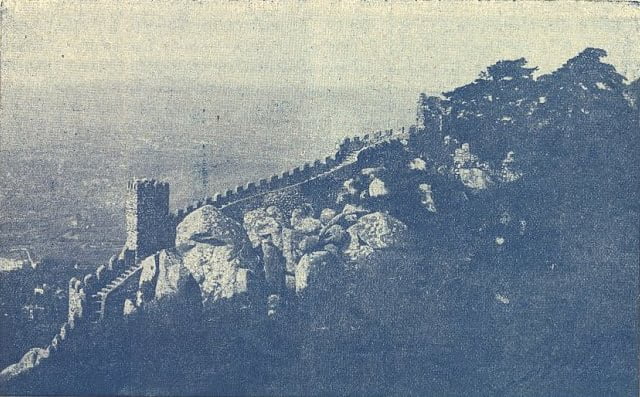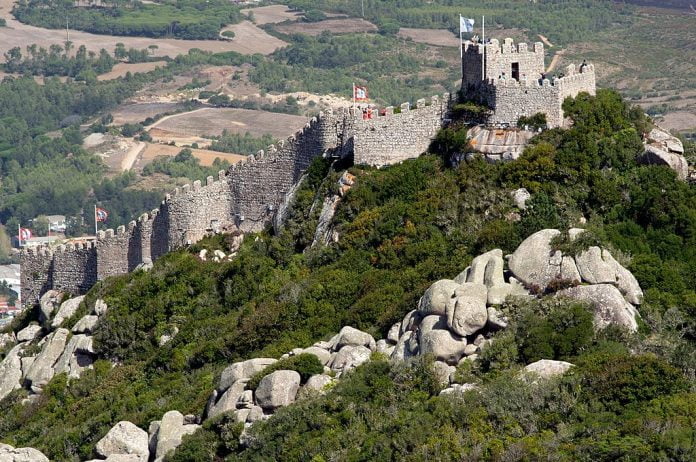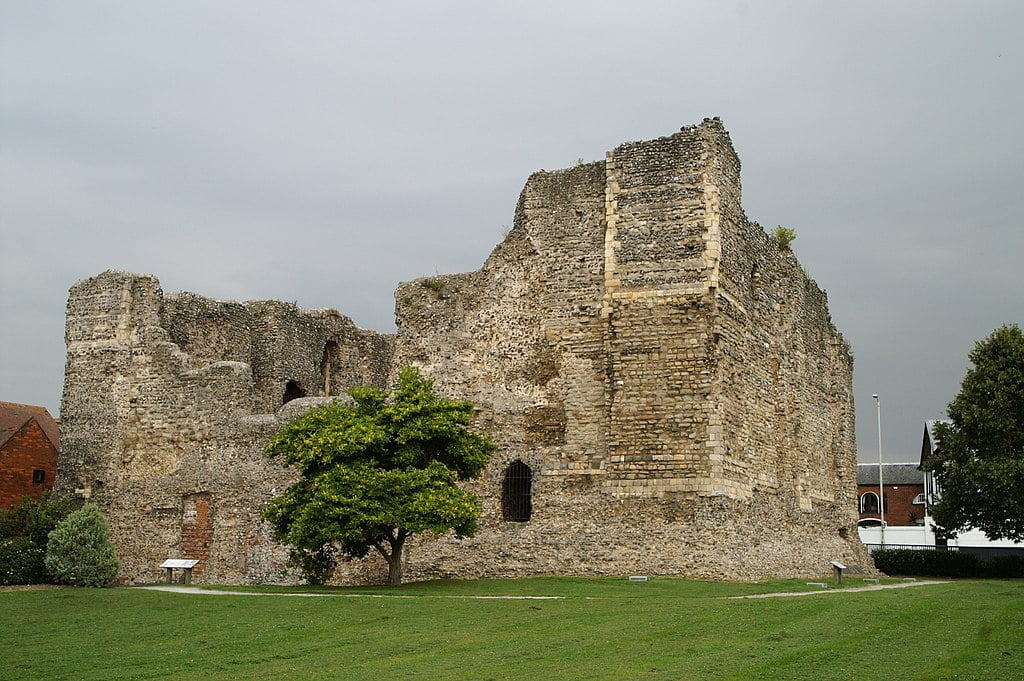A stunning site in Central Portugal, the Castle of the Moors is a medieval structure in central Portugal overlooking the stunning Sintra village from atop the lush green Sintra mountains. Everything about the fort, from the story architecture to the bewitching scenery around, demands a visit! Here’s everything you need to know about it:
Table of Contents
The chapel is believed to have served as a mosque before the Reconquista.

Frequently Asked Questions
Where is Castle of the Moors Located?
The Castle of the Moors is located in the municipality of Sintra in the parish of Santa Maria e São Miguel. It is situated atop a hill in the lush green Sintra Mountains.
When was Castle of the Moors Built? Who Build It?
The Castle of the Moors was built between the 8th and 9th centuries by the Moors.
When is The Best Time to Visit the Castle?
Although the castle can be visited any time of the year, it is a particularly good site to visit in the spring or late summer. The hill station provides a chilly, windy retreat on a warm day and you can enjoy a serene walk through the cool corridors of the castle.
What Other Monuments are Located Nearby?
Other monuments located close to the Castle of the Moors include the Sintra National Palace, High Cross, and the National Palace of Pena.
FOR HISTORY | BEAUTIFUL IMAGES | INTERESTING FACTS | TRAVEL TIPS
Early History
Construction – 8th century
The Castle of Moors was built around the 8th century, during the time of Muslim rule over present-day Spain and Portugal. It was constructed as a defense structure, to protect a territory that was agriculturally significant.
The 11th-century Invasion
In the year 1031, the city of Cordoba fell to the Almoravid dynasty. The king of Badajoz at the time decided to form an alliance with the Christian king by transferring some territories, which included the castle, in an effort to strengthen his hold of the region and keep it from invasion. However, the alliance did not prevent the region from falling to the Almoravids.

Back Under Christian rule (12th-14th Centuries)
In 1147, Lisbon was captured by Christian forces under Alfonso Henriques and the castle was taken by them. The responsibility of securing the castle was handed over to 30 inhabitants of the castle who were granted certain privileges in return. The cathedral inside the castle became a parish seat. Later in the 12th century, under King Sancho I, the castle underwent remodeling and renovation.

By 1375, a lot of the inhabitants had begun to move out of the castle. King Ferdinand I of Portugal ordered it to be fortified and strengthened in order to secure it. By the late 15th century, the parish seat was relocated from the castle’s cathedral to a new church in the village. The castle was largely abandoned, being used only by the small Jewish community in the area–until they were expelled by Manuel I.
18th Century Onwards
In the 18th century, an earthquake hit Lisbon which caused damage to the castle. By 1838, the structure was almost in ruins. Two years later, Ferdinand II renovated and reformed the castle’s structure.

Revisit More Historic Places Below or Read Further
Current Times
In the 20th century, several projects authorized by the Forestry Service and later the Directorate-General of National Buildings and Monuments were conducted to remodel the Castle of Moors and make it tourist-friendly. A picnic area was established and lighting was installed to brighten up the ambiance. The Ministry of Culture declared it as a zone of special interest in 1996.
The castle maintains its glorious appearance and is open to the public. There is plenty to see at the site, including towers, defense structures, and the splendid scenery around it.

Interesting Castle of the Moors Facts
- The highest tower is located towards the southwest of the castle, known as the Royal Tower.
- The chapel in the castle was constructed with limestone and masonry.
- The chapel is believed to have served as a mosque before the Reconquista.
- Close to the secondary wall with the main entrance to the castle is a cistern, which is 18 meters (19.6 yards) in length, 6 meters (6.5 yards) in width, and 6 meters (6.5 yards) deep. It was used to collect water from openings in the roof.
Visiting Castle of the Moors – Tips and Tricks
The fairytale surroundings of this castle make it a great tourist destination if you’re in the area. If you visit Portugal, then you should go and see this castle. Here’s everything you need to know for planning a visit:

How to get to Castle of the Moors?
From Lisbon, you can get to the Castle of the Moors via bus, taxi, train or car. Taking the Line 35 bus would be the most affordable option, with prices as low as €1 ($1 USD). The journey would take a little over 50 minutes.
The second cheapest option is to take the Line 18801 train, with fares starting from as low as €2 ($2 USD). The journey would take around an hour and 11 minutes. From the train station to the castle, however, is another 30-minute walk.
Taking a taxi, although relatively expensive, is the fastest way to get to the castle. The fares start from €56 ($65 USD) and the expected time for the journey is a little over 30 minutes.
You can also rent a car for the journey, which would allow you to go at your own pace and convenience. The journey will take you 31 minutes; the approximate fuel cost should be €4-€6 ($5-7 USD).
Ticket Prices, Visiting Hours & Travel Tips
Information was checked & updated on October 24, 2023.
The castle is open all week long from 9:30am to 6pm. You would require a ticket to enter the premises, which costs €8 ($10 USD). You can get a cheaper ticket if you combine the tour with a visit to the National Palace of Pena.

How Long Will It Take to Tour Around?
The tour itself should take a couple of hours, but it is recommended to spend more than 3 hours at the site to enjoy a paced walk with mesmerizing views of the city and the surrounding hills.
Up to Date Information
For up to date ticket prices and visiting hours visit the official website: https://www.parquesdesintra.pt/en/parks-monuments/the-moorish-castle/
Some words of advice and tips:
- The scenery may be frightening for people with a fear of heights.
- It is recommended to take a bottle of water as the steep hike can get tiring.
- Wear comfortable shoes for a comfortable hike!
- If you are traveling with kids, make sure they remain a safe distance away from the walls to avoid a fall.



